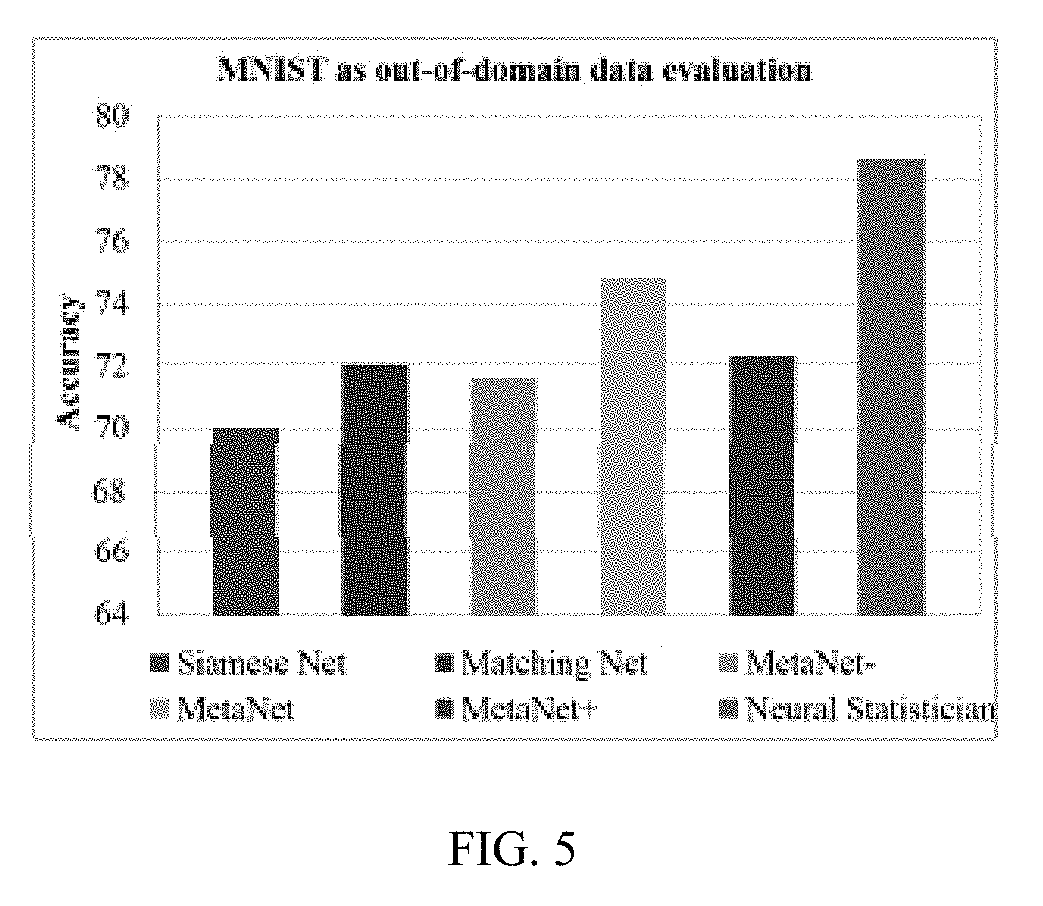Method for Meta-Level Continual Learning
a meta-level, continuous learning technology, applied in the field of meta-level continuous learning, can solve the problems of class or concept variation across tasks, lack of continuous learning or incremental learning of new concepts in standard deep neural networks, and inability to forget or corrupt,
- Summary
- Abstract
- Description
- Claims
- Application Information
AI Technical Summary
Benefits of technology
Problems solved by technology
Method used
Image
Examples
Embodiment Construction
[0022]A description of example embodiments follows.
[0023]The invention generally is directed to a method of classifying an input task data set by meta level continual learning.
[0024]In one embodiment, the method includes analyzing a first training data set to thereby generate a meta information value in a task space. The first meta-information value is assigned to the first training data set to generate a first meta weight value in a meta space. A second training data set that is distinct from the first training data sets is analyzed to thereby generate a second meta information value in the input in the task space. The second meta information value is assigned to the second training data set to generate a second meta-weight value in the meta space. The first meta-weight value is compared to the second meta-weight value to thereby generate a slow weight value. The slow weight value is stored in a memory that is accessible by the test space and the meta space. An input task and data ...
PUM
 Login to View More
Login to View More Abstract
Description
Claims
Application Information
 Login to View More
Login to View More - R&D
- Intellectual Property
- Life Sciences
- Materials
- Tech Scout
- Unparalleled Data Quality
- Higher Quality Content
- 60% Fewer Hallucinations
Browse by: Latest US Patents, China's latest patents, Technical Efficacy Thesaurus, Application Domain, Technology Topic, Popular Technical Reports.
© 2025 PatSnap. All rights reserved.Legal|Privacy policy|Modern Slavery Act Transparency Statement|Sitemap|About US| Contact US: help@patsnap.com



